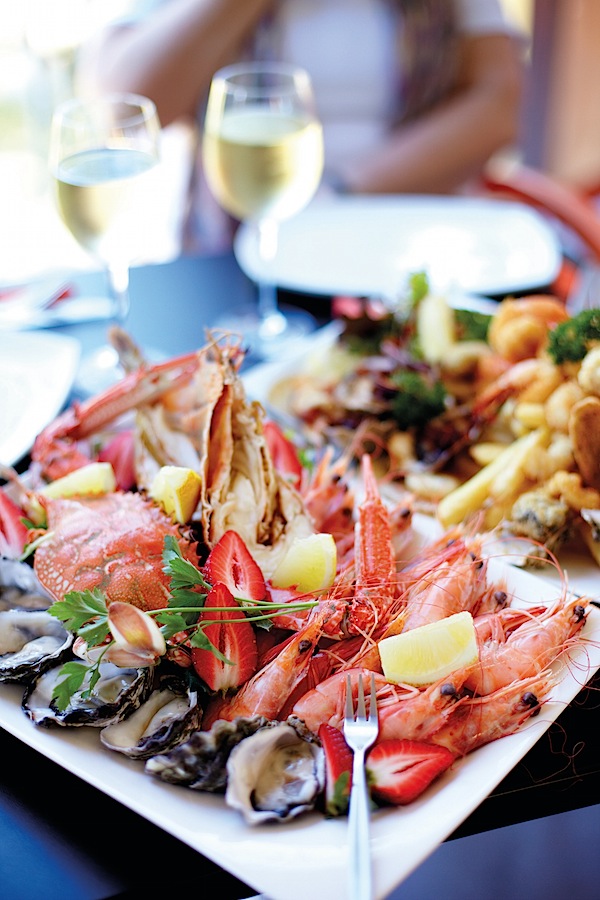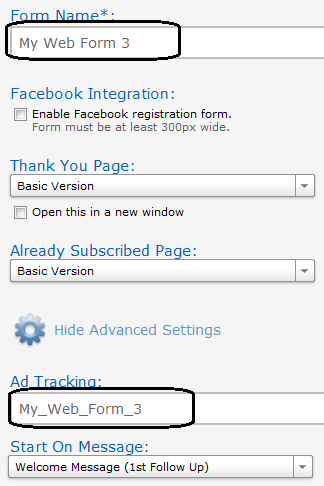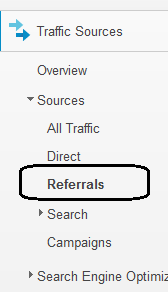 | Blog Tips to Help You Make Money Blogging - ProBlogger http://www.problogger.net рекомендовать друзьям >> |
- Blogger Correspondant Great Barrier Reef Itinerary: #QldBlog
Last week I excitedly announced a competition to fly 10 ProBlogger readers into the Great Barrier Reef in Queensland. The response has been amazing. We’ve had hundreds of entries and there has been some great interest in the promotion.
With just under a week to go to get your entries in I thought today I might whet your appetite a little by revealing the itinerary of the trip. It’s still being finalised so this may change a little, but here’s what we’re planning to do on the trip so far.
Day 1: Tuesday 5 June
Ten of the world's most imaginative bloggers arrive in Cairns, the gateway to the Great Barrier Reef and our northern-most frontier city.
Tonight we start our adventure with some up-close-and-personal time with the locals. We're not talking about the two-legged kind here; we are talking about Australia's quirkiest and cutest native animals.

After that, we'll be zipping around the corner to one of the coolest restaurants in town that overlooks the Pacific Ocean. Unsurprisingly, the nosh on the menu is fresh Queensland seafood!
Day 2: Wednesday 6 June
At 2600 km long, The Great Barrier Reef is the world's biggest living organism, and the only natural object that can be seen from space. It's also on the bucket list of just about every person on the planet with a heart for adventure.
This morning we are getting one step closer to the reef by sailing to a nearby tropical island for a little Crusoe Time—with full Internet access and a private blogging workshop with me. I’ll do a little teaching (based a survey of the winning bloggers’ needs) and we’ll also spend some time workshopping the winners’ blogs together.

After lunch, you have free time to explore the island and get inspired. You may wish to go for a sail, snorkel with the aid of a fun underwater tow jet, take the plunge in a mini-submarine, or laze around the pool with a cocktail in hand. Whatever your story line, the creative juices are sure to be flowing.
Back on the mainland and a little drive north is Palm Cove (one of my personal favourites of the towns along the reef), and the location of tonight's twilight meal, served with box office views of the Great Barrier Reef through a palm fringed shoreline.

Day 3: Thursday 7 June
Pack up your bags, because today we are trading the world's most loved reef for the world's oldest rainforest. This morning we venture north to Mossman River and a stunning rainforest retreat in the middle of the Daintree Rainforest. Here we will conduct our second blogging workshop surrounded by the sounds of cicadas and running water. It will be one of the most exotic locations for a blogger training workshop the world has ever seen!

Afterwards, explore the Mossman River with an indigenous guide and then chill out by the water's edge. You might even like to take a dip if you're daring!

At night we change our location and head to Port Douglas, a former fishing village turned star-spotting holiday hot spot that has kept its laid-back, beach town heart. Tonight's dinner is a special occasion sure to be remembered, held at a secret location.
Day 4: Friday 8 June
After all that brain-flexing over the past two days, now is the time for us to relax and head out to experience the Great Barrier Reef in style.

Whether you're a passionate diver or more of an above-the-water kind of explorer, there will be an option to suit you. We'll have the choice of a relaxed day of sailing and snorkelling a pristine coral cay, an adventurous outer-reef trip to discover the glorious Agincourt Ribbon Reefs, and the option to take in everything from diving, to fish feeding, and simply marvelling at nature in the underwater observatory on a floating outer-reef platform.

Back on dry land, we'll mingle with the locals at an iconic Australian pub and enjoy some delicious tucker (that's dinner to you and me).
Day 5: Saturday 9 June
Today you have the chance to really choose your own adventure!
With four itineraries to pick from, you might find yourself:
- learning ancient art techniques and hunting and gathering skills from local Indigenous tribes
- kayaking along pristine coastline and zipping through the trees in the World Heritage Listed Daintree rainforest on an adventurous tour like no other
- coming face to face with Australia's cute (and not-so-cute) native animals, and enjoying a true Australian country experience
- really getting the blood pumping as you take to the skies, saddle up a wild steed, and finish off with a trip down the river rapids.
Note: on this 5th day we can attempt to tailor what you do to the type of story you’d like to cover. For example if you’re a photographer you might like to spend the day on location somewhere to capture a shot or if you are looking to see something specific or interview someone about some aspect of Queensland we’ll try to set that up for you.
There will also be some flexibility and free time on most days for you to create content or see things relevant to your niche. We’ll do our best to tailor the trip to those on it (no guarantees).

They don't call Cairns and the Great Barrier Reef “Adventurous by Nature” for nothing!
Make sure you save some energy though, because tonight we'll enjoy a final celebratory meal together at one of Port Douglas's most iconic restaurants.

Sunday 10 June
Is it really time to say goodbye?
Enter today
I still can’t quite believe that we’re running this trip—it really is my dream to take some blogging friends to this destination. We’re going to have an amazing few days together.
This trip is open to all bloggers over the age of 18 from around the globe (including Australia). We are looking for bloggers in all kinds of niches. While some have commented that it is a travel blogger conference, we’d love to receive entries from all niches. You can cover the trip from what ever angle you choose. For example:
- Food bloggers: food will be a big part of this trip. Why not review the places where we eat, and talk about the Aussie food you come across?
- Parenting bloggers: Queensland is a great family vacation destination. Write about the trip for prospective parents looking to visit.
- Photography bloggers: You’ll see some of the most beautiful scenes in the world over this week, and they’re ideal for anyone with a camera to document.
There’s no end to the angles you can take as a blogger correspondent on this trip. So get your creating thinking going and include the angle you’d take in covering the trip in your entry.
There is less than a week to get your entry in, so you do need to act now to make sure you’re in the competition.
To enter simply read the terms and conditions of the competition and then fill in the entry form here.
Originally at: Blog Tips at ProBlogger

Blogger Correspondant Great Barrier Reef Itinerary: #QldBlog

Переслать - A Systematic Approach to Writing Successful Blog Posts
This guest post is by Jane Sheeba of Problogging Success.
“Success” is a very relative term. Unless you define it precisely, it’s very easy to become lost in a sea of assumptions. You can work hard on building a blog without having defined your “success,” but if you do, how will you know if you’re progressing successfully?
A blog post is an essential part of the blog—in fact every single blog post is a very important entity of the blog. Subtract all the blog posts and you have no blog left.
So your blogging success depends heavily on the success of your blog posts. And as Shaun Connell explained earlier today in The Systematic Blogger’s Mainfesto, if you can systematize your blogging, you can create a more reliable path to whatever you’ve defined as success.
So in this post I’m going to show you a system for creating successful blog posts, every time.
1. Define your “success”
As I said already, “success” is a very relative term. It differs from person to person and blog to blog.
- For some “success” may mean building an email list which is highly responsive.
- For some it could be making X number of affiliate sales.
- For some it could be directing people to a particular service.
So unless you know precisely what you want, you cannot know what to do in order to achieve success—or if you’ve succeeded at all.
Defining your success is nothing but setting a goal. This applies to blog posts just as well as it does to your blog overall. Every blog post you write should have a clear purpose. How can you identify it? Ask yourself, “What do I want from this blog post?”
Let me give you some examples:
- If you’re writing a product review, your goal could be to make X number of product sales.
- If you’re writing a series about how to make money blogging, your goal may be to attract a certain percentage of readers to subscribe to your email list.
- If you’re writing a guest post, your goal might be to generate a number of clickthroughs to your own site.
Once you’ve defined your goal, and defined “success” clearly, you can start working on the post.
2. Choose a topic that your readers and the search engines want
Readers are the lifeblood of your blog, so you must write what your readers want.
Do not assume that your blog readers will be like you. Do not assume that a particular topic will interest them. Do not make any assumptions. Rather, research and find out what interests your blog readers. If your blog post doesn’t strike a chord with your blog readers, you will be wasting a lot of blogging energy with no return.
There are various ways to find what your readers want.
- Yahoo Answers and Quora are great places to start with. Type in your primary keywords and you’ll see what people are hungry for.
- Go to the free, famous, and useful Google Keyword Tool and type in the same keyword you used in Yahoo Answers and Quora. Then click on Phrase Match, and pick up a handful of potential keywords that have low or medium competition, but high global monthly searches.
- Visit Wordtracker Keyword Questions (you’ll have to register for a free account) and, again, type in your keyword. This tool will give you a clear idea of the questions people are asking for on that particular topic.
- Google is another great place to find out what people are interested in. Go to Google and start to type in your keyword slowly—don’t complete it too quickly! As you type, you’ll see Google’s suggestions appear below the search box. While these options are personalized if you’re logged in to Google’s services, you can use anonymous browsing mode to remove personal settings from your search results.
Once you know what people are looking for, you’ll be able to come up with a great topic to write about. Do your research and deliver useful, practical advice on the topic. In fact, go further and over-deliver.
3. Include elements to help you achieve your goal
Earlier, you set a precise goal for this blog post. Let’s say you decided you want the post to prompt a number of people to opt in to your list. The element you’ll want to include to help people sign up is a link to your sign up form.
If you like, you can adopt a hard-sell approach to achieving this goal. But when you deliver awesome quality information in a post, a simple form at the end will do the work. You don’t even have to hit people multiple times with your subscription invitation.
The key is, don’t forget to include that element. If you want to generate a certain outcome from a post, make sure you’ve included the elements required to achieve that goal in your post.
As another example, if you want people to buy a particular product after reading that post, don’t forget to include a link to the product or talk something about that product in the post. If you omit those elements, you can’t expect achieve your goal, no matter how great your post is.
4. Promote your blog post
The word “promote” is often read as “spam others with…” But you don’t need to resort to spam.
If your blog post is of great quality, and you believe it will help many people, share it in social media. Take five or ten seconds to manually add a description to the post link before you share it.
If you want to share your post with your newsletter subscribers, create a compelling, non-spammy headline, and write a compelling teaser so that people will want to check out the post.
Promotion doesn’t have to be spammy—do it in such a way that people want to click through.
5. Analyze your results
This is the crucial part where you’ll measure your success in terms of numbers. Don’t skip this step! You won’t learn anything from all you’ve done so far if you decide to ignore the results. And if you don’t learn anything, you won’t be able to improve your systematic approach to writing successful blog posts.
Again, let’s consider the example of people joining your subscription list after reading your post. You could create a special opt in form for this particular post (instead of your usual generic one). In Aweber, you might create a new web form and, in the Settings screen (where you fill out the crucial details), name the form appropriately so that you can easily identify it.
It’s a good idea to use a short form of the title of the post itself to name your web form. You’ll see that Aweber uses the same name for the tracking ID. And, when you look at the stats of all your web forms, you’ll be able to see how well that form converts in comparison to the others—that is, you’ll know how many people actually looked at that form, how many opted in, and what the conversion rate is (as a percentage).
This is a great way to see how successful your post was at achieving this goal.
If you want to track sales or see how well your signup funnel performed on the whole, you can always use Google Analytics. Go to the Analytics information for your target page to see the referral information.
You’ll usually see domains (that is, the home page of other blogs or websites) in the referral details. If you click on a particular domain, you can see the break down of actual pages of that domain that sent traffic to your target page, and the actual number of visits that came from each.
So you can pinpoint exactly how many visits are sent to your subscription or product landing page from a particular blog post you’ve written.
A systematic approach to blog post success
Don’t neglect to provide quality on every blog post you write. Every time you prepare to write a post, ask yourself: What do I want out of this blog post? What’s the purpose of me writing this blog post? How will I know that it’s achieved what I want?
Considering all this may sound like a big task to do on top of writing the blog post itself. But asking these questions, and being clear about the answers, helps you to actually write posts that achieve your desired results with ease.
Jane is a blog consultant and the founder of Problogging Success. She has authored two e-books Problogging Action Plan (winner of the Small Business Book Awards, 2012) and Guest Blogging Champion to help bloggers become successful in their blogging business.
Originally at: Blog Tips at ProBlogger

A Systematic Approach to Writing Successful Blog Posts

Переслать - The Systematic Blogger's Manifesto
This is a guest post by Shaun Connell from Live Gold Prices.
I remember when I first began reading about “passive income”. It seemed brilliant: work hard and make sure you leverage your time and capital so that instead of being paid once, you’re paid a little bit every month into the future.
At the time, I was just running a blog for fun, and decided to go ahead and start a blog for profit. It's been about five years now, and I've been doing this full-time for about four years. I've learned a lot about blogging, passive income, internet marketing, SEO—the whole works.
The most important lesson I’ve learned?
Forget passive income: focus on systematic income
For most people, blogging is a bad way to get to a passive income. Most bloggers work hard the entire time they have the blog.
A passive income is an income you can just set and forget. And any successful blogger will tell you that for the vast majority of blogging experiences, the work never really stops—it just changes form. You can minimize the workload, but for the most part, it’s just about cutting the load without ever actually making it to a full-on passive status.
Is this a bad thing? Absolutely not. Those who understand that blogging is about finding repeatable systems are the most succesful bloggers on the Internet today. It’s all about learning how to create the right design, the right headline, the right path to success—those are systems that generally work regardless of who the blogger is.
I’ve written here before about systematic blogging and blogging for passive income.
A systematic blogger knows how to leverage usability, other people’s content, and good ideas in such a way that every bit of their work gets as much done as possible.
The following principles are some of the most important concepts one can ever understand in order to make one’s blogging as systematic as possible.
Blogging is just a “regular” website with a specific structure
In the end, the only real difference between the vast majority of websites is how they’re organized. They’re all still pretty much about the same thing—they’re a platform for connecting viewers with information of some sort. When we understand this, we’ll see why that’s important.
Facebook, Wikipedia, and About.com are all platforms for connecting content with viewers in a way that makes each network unique. The content is different, of course, but even if they had equally valuable content, each network would have a very different approach to connecting users with that content.
Once this is understood, the challenge of organizing one’s blog should suddenly present a plethora of new opportunities. For example, it’s alright for a blog to have sales pages as part of the design, or even a static homepage to make it easier for first-time visitors to see all of the most important concepts first. It’s alright to borrow structure ideas from other websites.
The vast majority of my websites—especially my gold prices website—now have the same basic structure: a static homepage, a newsletter page that I link to when saying “subscribe”, newsletter optin forms on every page, an autoresponder with several months’ worth of emails lined up for turning subscribers into repeat visitors and pitching them products, and a “blog” widget or page where users can see the latest articles.
The website structure, along with the other principles listed below, makes my business much more systematic. As long as I find a way to acquire new visitors to the site every day, I’ll end up with more people subscribed at the end of every month. And that’s half the battle: automation.
Blogging for profit is about retaining income, not just traffic
Traffic is just a tool. In the context of profit, it’s just fuel for the engine. That’s why some people are able to make great money with a little traffic when they’re writing about investments, while some websites can have ten times the traffic and barely pay the bills when they’re writing about lolcats.
Understand that traffic is just part of the process, and not the entire goal of the process.
Just because people are reading, that doesn’t necessarily mean the writer is earning. Don’t worry, this isn’t necessarily bad news. For people who understand that building systematic income is all about figuring out what it takes to get to profits in a “repeatable” format, everything is easier.
This is one of the reasons I entered the gold prices and rates niche, and one of the reasons the investment niche is so crowded—the results are generally harder to get, but often exponentially rewarding when achieved.
For example, understanding SEO and guest posting makes the entire process easier. There have been numerous courses teaching the same powerful principle of using proper SEO, proper keyword choices, and setting up one’s blog to be as usable as possible—and then guest posting to put traffic into one end of the “machine.” It’s all the rage because it works.
The systematic blogger understands that his blog is a machine, and if he takes care of it to make sure it’s running as well as possible, it’ll take care of him. By figuring out how to juice every visitor for as many pageviews as possible, to impress them with the best content displayed where it can be easily found, and to reward the visitor with plenty of goodies via an autoresponder, and then using the right keywords and consistent guest posting, the systematic blogger will succeed.
It sounds like a lot of work because, of course, it is. But after a while it becomes a type of routine and becomes simpler and simpler. After all, that’s the point of having a system in the first place—to generate simple, predictable, and powerful results.
What do you do to make sure your blog is as systematic as possible? Do you regularly guest post for other blogs? Do you have any tips for people looking to make their blog more systematic? Share them with us in the comments.
Shaun Connell is a systematic blogger who writes over at Live Gold Prices, his latest project where he discusses both the rate of gold and the future of precious metal overall.
Originally at: Blog Tips at ProBlogger

The Systematic Blogger’s Manifesto

Переслать
 |  | Клуб Мамбини — это скидки для мам. Регистрируйтесь! |
| rss2email.ru |
| rss2email.ru | отписаться: http://www.rss2email.ru/unsubscribe.asp?c=12354&u=1052515&r=672244627 управление подпиской: http://www.rss2email.ru/manage.asp партнерская программа: http://partner.rss2email.ru/?pid=1 |


Комментариев нет:
Отправить комментарий